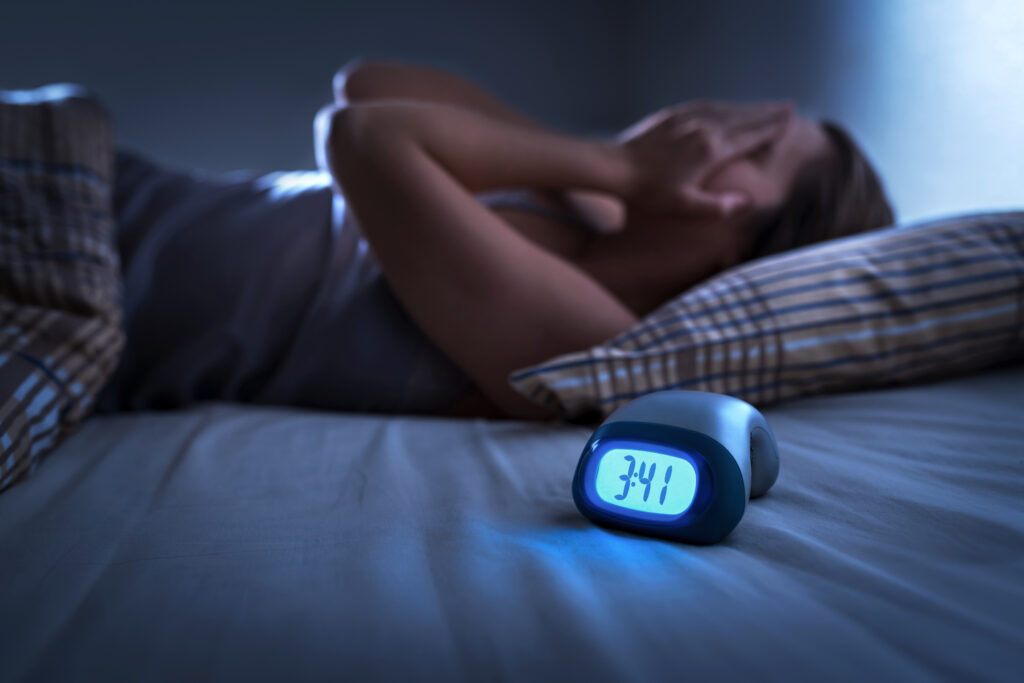The occasional restless night is normal; however, when sleep troubles impact a person’s mental or physical health in a negative way, something more may be happening. Brendan Lucey, MD, director of Washington University Sleep Medicine Center, offers insight into sleep disorder symptoms, sleep studies and sleep disorder treatments.
What are some symptoms of a sleep disorder?
- Loud snoring, especially when associated with pauses or snorting noises
- Frequent brief choking, awakening with gasping or shortness of breath
- Awakening with a headache
- Persistent sleepiness when awake or falling asleep unintentionally
- Persistent fatigue
- Persistent difficulty falling or staying asleep
- An urge to keep moving the legs at bedtime or a rhythmic twitching of the legs after falling asleep
- Unusual behaviors during sleep, such as sleepwalking
What types of tests does the Sleep Medicine Center offer?
- Home Sleep Apnea Test: Sleep apnea may be screened using a home sleep apnea test. This test measures breathing disturbances, oxygen saturation and heartrate but does not measure sleep itself. It may need to be followed by an all-night in-lab sleep study.
- All-Night In-Lab Sleep Study: During an all-night in-lab sleep study, sleep technologists evaluate how well a person sleeps by monitoring breathing patterns, blood oxygen levels, muscle activity and heart rhythm. Data is collected by small electrodes stuck to a patient’s skin. A sleep physician analyzes the data to determine whether or not the patient has a sleep disorder and identifies possible treatments.
- CPAP Titration: If an all-night in-lab sleep study determines that a patient needs continuous positive airway pressure (CPAP) therapy, an in-lab CPAP titration study may be done. A CPAP machine delivers air to a patient through a tube and a facemask.
- Multiple Sleep Latency Test: A multiple sleep latency test may follow an all-night in-lab sleep study. This test lasts approximately seven hours and determines the presence and severity of daytime sleepiness by measuring how regularly and quickly a patient falls asleep during the day. It can also be used to help detect narcolepsy. During the test, patients nap for about 20 minutes every two hours.
- Maintenance Wakefulness Test: The maintenance wakefulness test is similar to a multiple sleep latency test, but patients are asked to sit in bed and stay awake instead of napping. The test consists of five sessions occurring every two hours with each session lasting about 40 minutes. This test can be used to evaluate the ability of a patient to operate a vehicle safely.
- Epilepsy Monitoring: Epilepsy monitoring may be done at the same time as other tests in cases where seizures are suspected.
How are sleep disorders treated?
Treatment will depend on what diagnosis a person receives, but may include:
- Lifestyle changes, such as diet and exercise
- Continuous Positive Airway Pressure (CPAP) therapy
- Implantable device
- Medications, such as sleep aids
- Behavioral therapy, such as counseling
- Sleep hygiene improvement, such as setting a consistent sleep schedule and reducing screen time before bed
For more information or to make an appointment with the Washington University Sleep Medicine Center, please call 314-362-4342.
Washington University Sleep Medicine Center
1600 S. Brentwood Blvd., Suite 600
St. Louis, MO 63144
